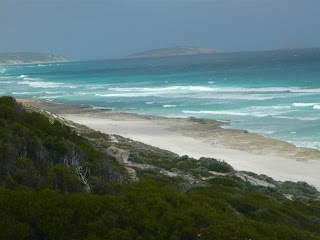[photo courtesty: Flickr Creative Commons; Available_Light]
Conflict; it's everywhere.
A year ago, I didn't know what the GMC was, I just wrote stories. For those of you who don't know what GMC stands for it's; Goal, Motivation, Conflict - and is the backbone of of many a novelists plot. As I'm something of a panster (so not a plotter), after I've written my story or got the lose idea for a new one, I now like to look over it and see if I actually have a GMC. Do my characters have believable goals set out early in the piece? Or secret ones hidden? What it the motivation behind their behaviour? What conflict is standing in the path to achieving their goal? It's quite amazing really, because even though I don't plot, if I go back and check - quite miraculously there's the GMC snuggled deep within my story.
Anyway, today, I'm concentrating on Conflict - because it's a bit exciting and something that is inescapable in daily life.
Conflict is important in a novel because if makes it interesting, without it, well, you wouldn't really have a story, you'd just have a snapshot of time, with no momentum or movement.
Conflict can be roughly described as an opposition of people, thoughts or entities.
Sir Arthur Thomas Quiller-Couch (an English writer and critic) was one of the first to openly discuss Literary conflict, and classify literature into seven different plots.
-Man against Man / Woman against Woman
-Character against Nature
-Character against themself
-Character against God
-Character against Society
-Character caught in the Middle
-Man against Woman
Today, there are a few more modern conflict couplings, such as; Character vs Technology, Character vs Magic, Character against Destiny/Fate - and I'm sure there's more if you thought hard enough about them.
Conflict creates reactions - and thus helps create the story. So how characters react in your story makes them believable and enjoyable to read.
There are two main patterns of reaction when it comes to literary conflict. Firstly; the conflict evokes an immediate emotional response. Hurt, shock, horror, rage even joy, can be some of the initial reactions to a conflict (and it's worthwhile remembering that not all conflict is bad for every character.) The emotional reaction then feeds into a physical action. Or secondly, (depending once again on the type of conflict) the the automatic physical action caused by the conflict has resultant emotional reactions.
I think (though I'm sure some will disagree) that generally speaking when the conflict is emotionally based (ie character against themselves, man against woman, etc) you will get the emotional reaction first, then the physical second. Whereas, when you have a physically caused conflict (character against society, character against nature) the initial action is a physical one the secondary is emotional.
1. Emotional Conflict = emotional reaction + physical action.
or
2. Physical Conflict = physical action + emotional reaction.
I'm sure however, you could mix it up a bit, as we all know a story can take an unexpected tangent when you're writing it, and characters aren't always predictable.
Having said that, being the author (and controlling those wayward characters!) to create a coherent, well considered, pattern of emotional and physical reaction to conflict - is one of the many things makes a story a good read.
Conflict can be roughly described as an opposition of people, thoughts or entities.
Sir Arthur Thomas Quiller-Couch (an English writer and critic) was one of the first to openly discuss Literary conflict, and classify literature into seven different plots.
-Man against Man / Woman against Woman
-Character against Nature
-Character against themself
-Character against God
-Character against Society
-Character caught in the Middle
-Man against Woman
Today, there are a few more modern conflict couplings, such as; Character vs Technology, Character vs Magic, Character against Destiny/Fate - and I'm sure there's more if you thought hard enough about them.
Conflict creates reactions - and thus helps create the story. So how characters react in your story makes them believable and enjoyable to read.
There are two main patterns of reaction when it comes to literary conflict. Firstly; the conflict evokes an immediate emotional response. Hurt, shock, horror, rage even joy, can be some of the initial reactions to a conflict (and it's worthwhile remembering that not all conflict is bad for every character.) The emotional reaction then feeds into a physical action. Or secondly, (depending once again on the type of conflict) the the automatic physical action caused by the conflict has resultant emotional reactions.
I think (though I'm sure some will disagree) that generally speaking when the conflict is emotionally based (ie character against themselves, man against woman, etc) you will get the emotional reaction first, then the physical second. Whereas, when you have a physically caused conflict (character against society, character against nature) the initial action is a physical one the secondary is emotional.
1. Emotional Conflict = emotional reaction + physical action.
or
2. Physical Conflict = physical action + emotional reaction.
I'm sure however, you could mix it up a bit, as we all know a story can take an unexpected tangent when you're writing it, and characters aren't always predictable.
Having said that, being the author (and controlling those wayward characters!) to create a coherent, well considered, pattern of emotional and physical reaction to conflict - is one of the many things makes a story a good read.



